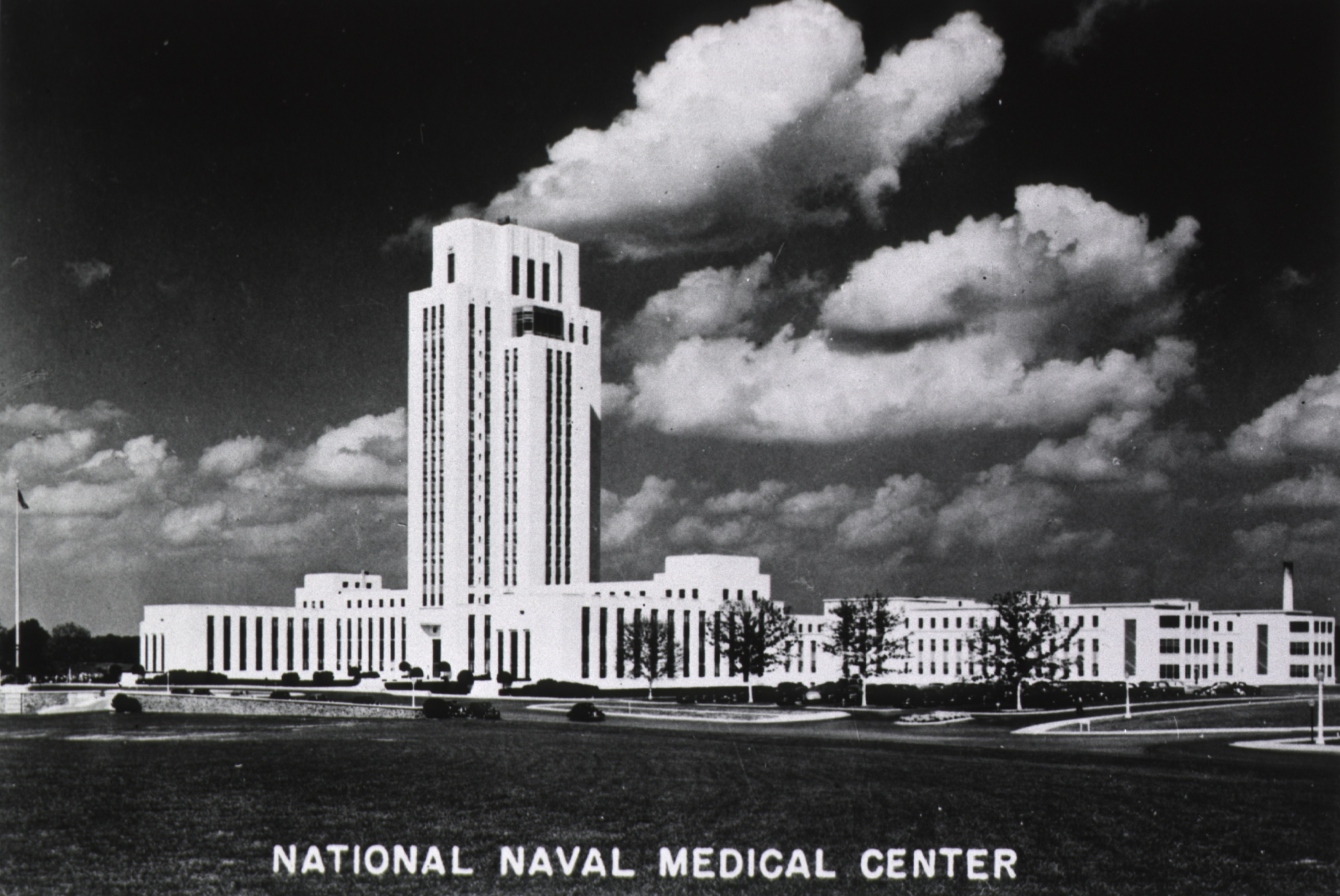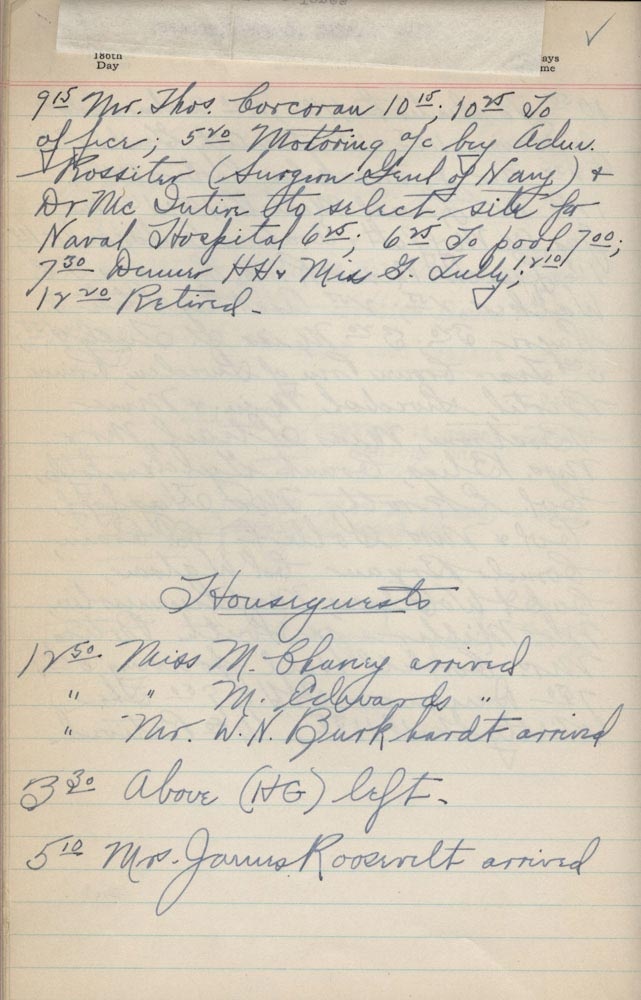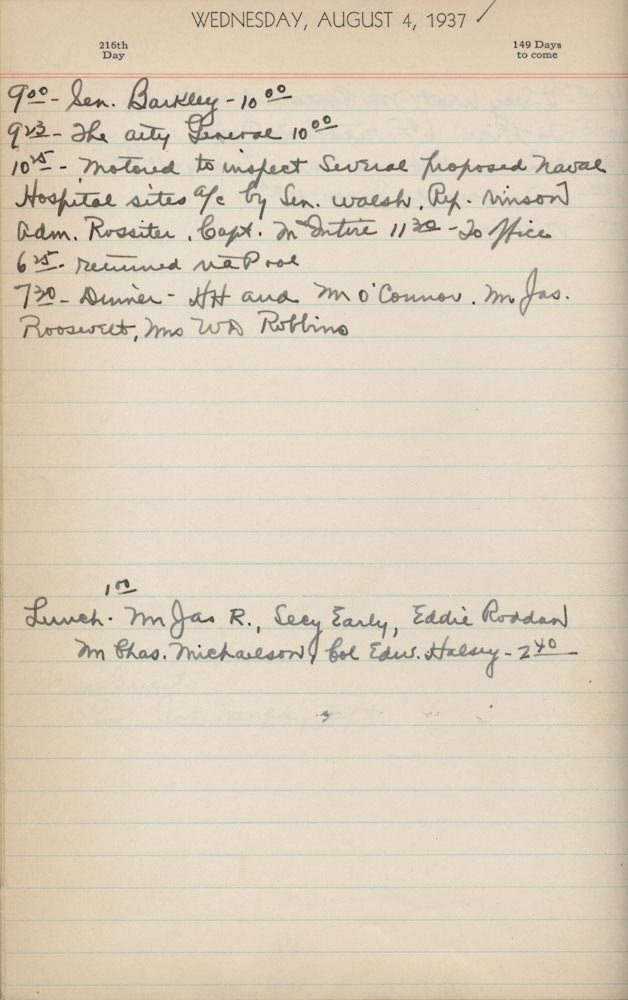FDR, the Wilsons, and the Naval Medical Center
| Div | |||||||||||||||
|---|---|---|---|---|---|---|---|---|---|---|---|---|---|---|---|
| |||||||||||||||
|
| Div | |||||||||||||||
|---|---|---|---|---|---|---|---|---|---|---|---|---|---|---|---|
| |||||||||||||||
Setting the Scene:
|
| Div | |||||||||||||||
|---|---|---|---|---|---|---|---|---|---|---|---|---|---|---|---|
| |||||||||||||||
Did President Franklin Roosevelt design the U.S. Naval Medical Center building?
|
| Div | |||||||||||||||||||||||||
|---|---|---|---|---|---|---|---|---|---|---|---|---|---|---|---|---|---|---|---|---|---|---|---|---|---|
| |||||||||||||||||||||||||
|
| Div | ||||||||||
|---|---|---|---|---|---|---|---|---|---|---|
| ||||||||||
|
Did President Franklin Roosevelt
chosechoose the site of the Naval Medical Center?
Yes!
FDR was particular about where buildings and monuments should be placed. He wanted to have a tall tower at the Naval Medical Center, and that would not be allowed inside the District of Columbia — but outside of the District was another story. Where, oh where, could it be located? Supposedly, 80 sites were considered. The one that won was a cabbage farm across Rockville Pike from the site where the new campus for the National Institute of Health (then singular) was being built on Luke and Helen Wilson's donated land. FDR is supposed to have poked his cane into the dirt when he saw it, saying, "We'll build it here."
Did that happen? What we do know for sure is that Roosevelt motored out with Surgeon General Percival Rossiter, his personal physician Vice Admiral Ross T. McIntire, Senator David I. Walsh, and Congressman Carl Vinson to visit several proposed sites on August 4, 1937. We know that thanks to the Franklin D. Roosevelt Day by Day, a project of the Pare Lorentz center at the FDR Presidential Library which uses the schedules kept by the White House Usher, the White House stenographer, and other diaries to show what happened on any day of his presidency.
On July 5, 1938, FDR's schedule once again has him motoring to see a proposed site, this time with just Rossiter and McIntire. This is when Roosevelt is said to have struck the ground and declared the lowly cabbage patch in Bethesda the best site for the Naval Medical Center.
| Div | ||||||||||||||||||||
|---|---|---|---|---|---|---|---|---|---|---|---|---|---|---|---|---|---|---|---|---|
| ||||||||||||||||||||
|
Did President Franklin Roosevelt ever visit Luke and Helen Wison?
| Div | |||||
|---|---|---|---|---|---|
| |||||
|
Is this folktale true? And how did it get started?
| Div | |||||
|---|---|---|---|---|---|
| |||||
|
Read more about it:
| Div | |||||
|---|---|---|---|---|---|
| |||||
|







